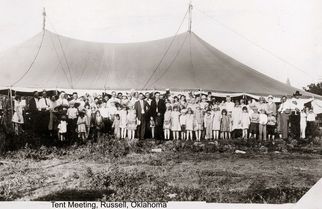 (Note: My choir, the Cherry Creek Chorale, is singing a medley of Harold Arlen songs for their May 2024 concert, including “Get Happy.” Make plans to attend if you live in the area!)
(Note: My choir, the Cherry Creek Chorale, is singing a medley of Harold Arlen songs for their May 2024 concert, including “Get Happy.” Make plans to attend if you live in the area!)
This will be yet another of my long, meandering posts telling you more than you ever wanted to know! This time it’s about the song “Get Happy.”
First off, I remember seeing Judy Garland sing it in the famous clip from the 1950 movie Summer Stock. It was some kind of television retrospective on Garland and her career, and I can hear the narrator’s voice saying, “Everyone agrees that this performance was one of her very, very best.” The song, which comes at the end of the movie, also marked the end of Garland’s career at MGM. She had been struggling with drugs and depression and had been let go from the movies The Barkleys of Broadway in 1948 (and replaced with Ginger Rogers) and Annie Get Your Gun in 1949 (and replaced with Betty Hutton). It’s hard to imagine those two movies with Judy in the lead, for me anyway. I don’t think of her particularly as a dancer. She was given another chance with Summer Stock and managed to get through the filming with lots of sympathy and help from her co-stars, but MGM had had enough. Her contract was terminated “by mutual consent” after the film was finished. The final number, though, was filmed two months after the rest of the movie was completed, after Garland had lost a fair amount of weight by means of hypnosis. (That’s the story, anyway.) Observers have noted that she’s thinner in that final sequence than she is in the rest of the film.
But have you ever actually paid attention to the words of the song? Once I did so, I found them rather puzzling. You’d think an admonition to “get happy” would be about having a big party or something, but it’s really about . . . going to Heaven:
Forget your troubles
Come on get happy
You better chase all your cares away
Shout hallelujah
Come on get happy
Get ready for the judgment day
The sun is shining
Come on get happy
The Lord is waiting to take your hand
Shout hallelujah
Come on get happy
We’re going to the promised land
We’re heading across the river
Wash your sins away in the tide
It’s all so peaceful on the other side.
So I did some internet diving and came up with the following background:
First of all, the phrase “get happy” originally came from African-American spirituals and meant “filled with the Spirit.” As Wikipedia tells us, “’Get happy’ is a term used in the African American Gospel Music tradition, that refers to the experience of receiving the Holy Spirit during a Church service, usually involving ecstatic singing, or during prayer, or spontaneously.” With that understanding in mind, it starts to make sense that a coming “judgment day” would be a time of happiness and also explains the image of washing one’s sins away.
How did this imagery end up in a jazz arrangement for a secular movie? That’s a very good question. To begin with, the song wasn’t written for Summer Stock but for The Nine-Fifteen Revue from 1930 and was the first product of a collaboration between the composer Harold Arlen and lyricist Ted Koehler. They went on to write other great hits such as “Stormy Weather.” As is almost always the case, I don’t know the roots of creativity and therefore why Arlen and Koehler decided to write this song. All I know is what I read in the papers, or Wikipedia, which says, “It echoes themes of a Christian evangelical revivalist meeting song.” If I could track down and then watch The Nine-Fifteen Revue I might be able to get some context, but it’s not available on YouTube, my other great source of information.
Judy Garland herself picked this song as the final big number for Summer Stock, and it was a staple in her later concert career after she left movie making. I’d love to understand not only the genesis of the song itself but of the choreography for the number in the film. It seems so weird. All these black-suited men doing rather odd things such as pounding their fists on the floor. Beats me! Judy’s costume for the number was considered to be pretty, hmmm, not shocking, exactly, but striking. She’s wearing a man’s fedora and tuxedo jacket, with black nylons and heels. Shades of Marlene Dietrich!
In case you’re wondering, the plot of Summer Stock revolves around that deathless trope, “let’s put on a show!” So the whole last part of the film is of said show, which gives lots of scope for music and dance. And Gene Kelly was in it! I plan to watch the whole thing at some point in my life.
Here’s the clip from the movie:
And here’s a choral arrangement–I don’t know why it has so few views:
© Debi Simons

